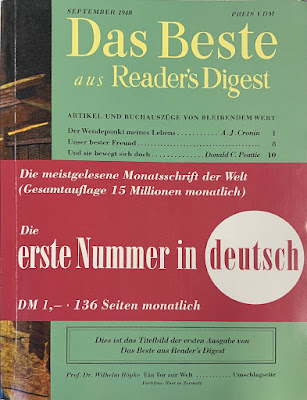The renaming of streets in Freiburg continued, and so we lost the following names: Rennerstraße, Lexerstraße, Gallwitzstraße, Eckerstraße, and Ludwig-Heilmeyer-Weg.
In 2018 we finally saw the scaffolding disappear that had disfigured the steeple of our minster church for twelve long years. In 2019 we proudly presented the most beautiful steeple in the world again.
Currently, two of the stands selling bratwurst at the market on minster square are missing. Therefore long lines form waiting to snatch a Lange Rote or a Currywurst. One of the vendors threw the towel due to old age, and the other lost his license following a tax fraud. Because nobody likes to stand in line for his "wurst," the city has sent out a call for vendors hoping that more competition will be good for business, an assumption that does, however, not hold for people selling wurst.
 |
| Freiburger Bügel on Bertoldstraße |
Freiburg lost the speed limit of 50 km/h (31 mph) on the essential inner-city thoroughfare between the Rhine valley and the Black Forest*, replacing it with the lower 30 km/h (18.6 mph) generally applied in residential areas. The reasons are air and noise pollution and heavy trucks' excessive wear and tear on the street surface.
*Bundesstraße 31 (Federal Highway 31)
The tenant of Freiburg's historical restaurant Kleiner Meyerhof threw the towel too. The place's name dates back to when farmers served food and drink like peasant Meyer did at his "little farm." Older Freiburgers and families with children like to be served traditional Baden cuisine at Kleiner Meyerhof. Still, the old people are dying out, but parents instead follow their kids to burger places. Freiburg now sports a trendy place serving "FreiBurger" to Freiburgers and tourists alike.
Last but not least, Freiburg lost its long-time mayor in 2018. Dr. Dieter Salomom standing for re-election was beaten by young Martin Horn. Red Baron reported extensively.
 |
| Watching the incoming election results with growing stupefaction (©BZ) |
Goodbye? My readers, fear not! I am still not running out of topics for my blogs, but as another task takes up much of my time, I will have to cut back on my writing activities.
I wish all my readers a Happy New Year! and einen guten Rutsch as we say in German. This has nothing to do with a good slide into the new year but is rather spoofed Hebrew. "Rosh ha-Shana" means the beginning of the year.













